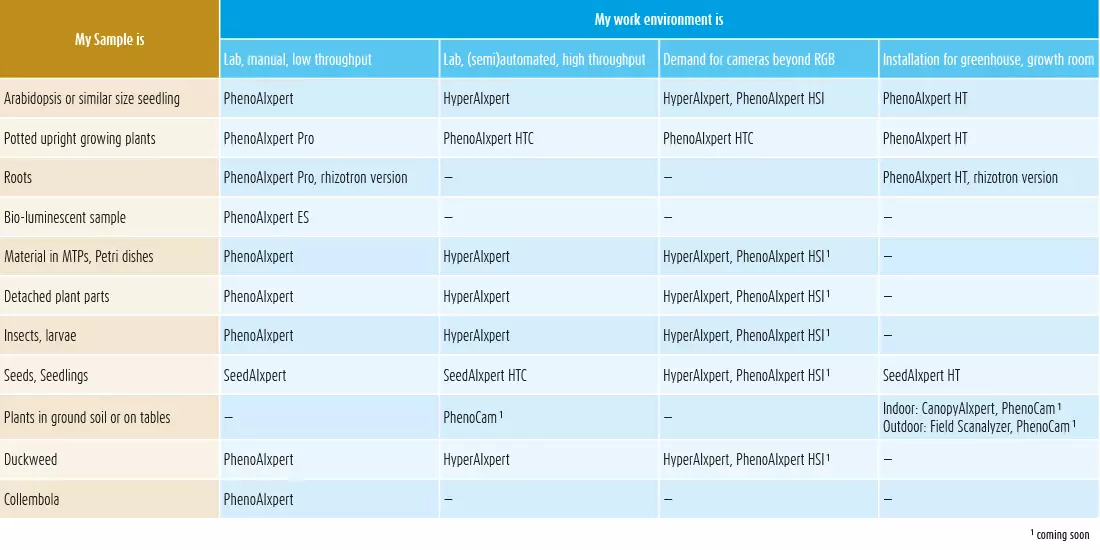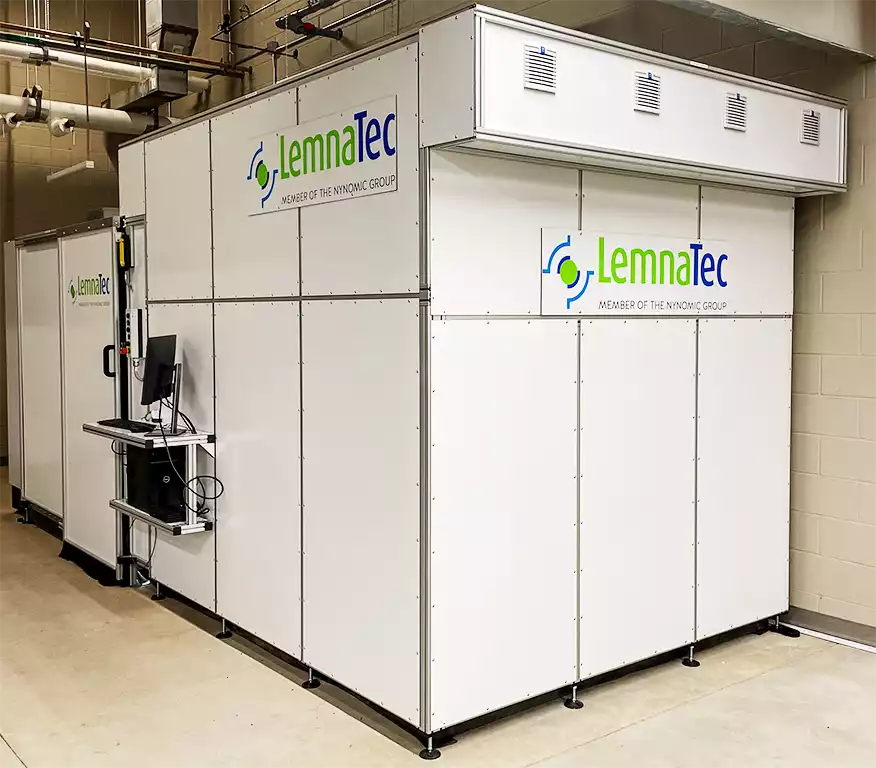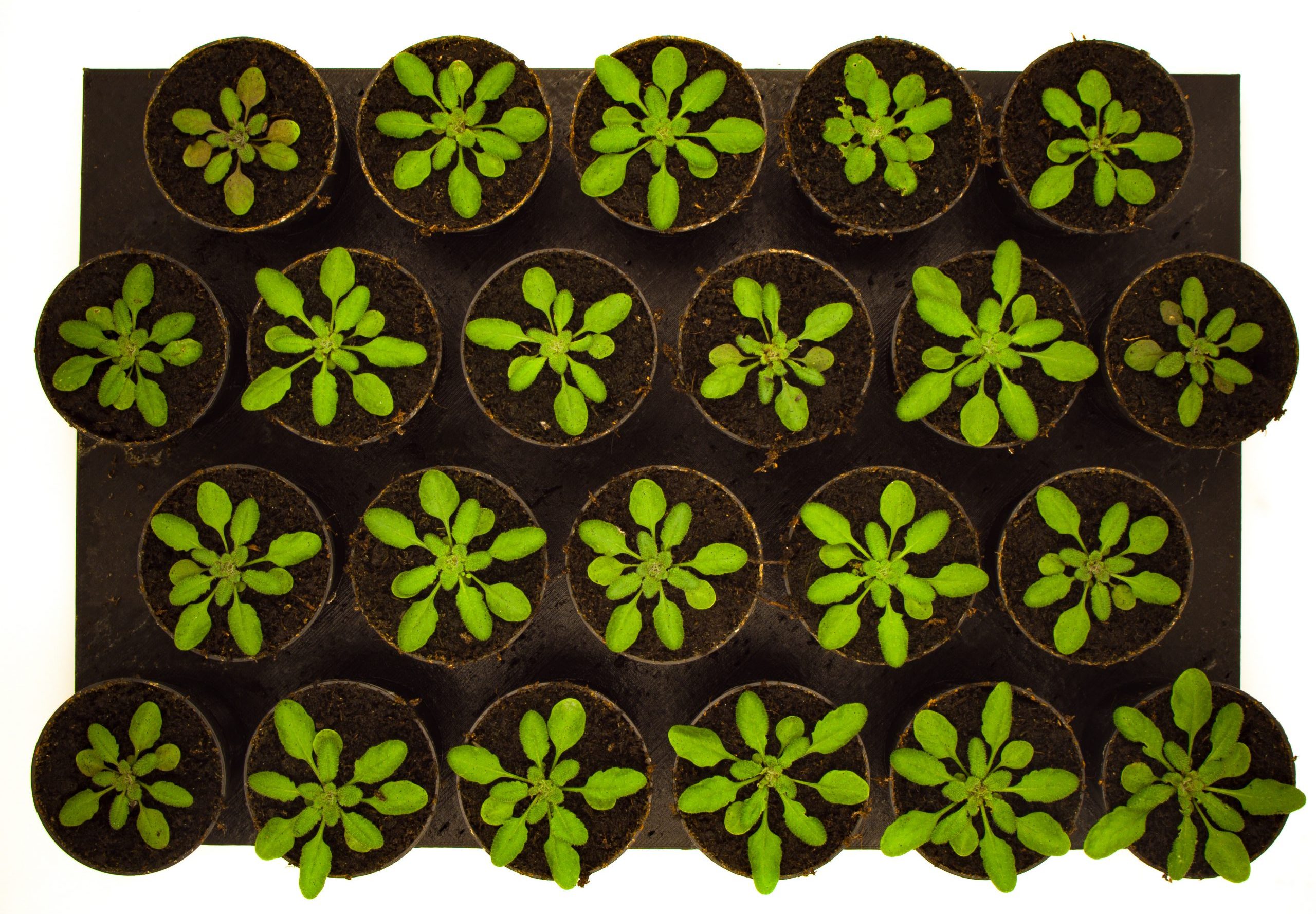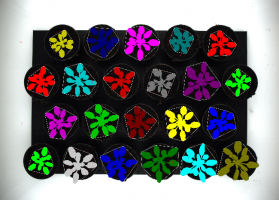The semi-automated compact multi-sensor phenotyping system.
PhenoAIxpert HTC is an ideal solution for phenotyping growing plants of a height up to 700 mm and with a diameter up to 500 mm. It can harbor pots up to 195 mm diameter, and maximum weight of 10 kg (plant, soil, water, and pot). It is suitable for many plant species including most common crops, vegetables, and performs morphological and physiological phenotyping with a range of sensors. Applications are numerous in research, breeding and product development. PhenoAIxpert HTC combines high flexibility in imaging with a compact footprint. The PhenoAIxpert HTC is a compact semi-automated phenotyping system, where a user loads the plants onto a conveyor for subsequent measuring. Plants are systematically transported by the conveyor through a series of imaging stations, where specialized cameras acquire high resolution images.
Applications for PhenoAIxpert HTC
PhenoAIxpert HTC delivers data wherever multi-dimensional phenotyping at increased throughput is required. Applications comprise but are not limited to:
In the PhenoAIxpert HTC, each plant is imaged sequentially with one or multiple camera units, employing different wavelengths in the visible and non-visible spectrum. Besides visible light imaging, LemnaTec offers imaging options in the infrared and near-infrared spectrum, hyperspectral, fluorescence, and chlorophyll fluorescence imaging, as well as laser scanning. The result is an unprecedented number of reproducible data points on many aspects of plant health and development.
Application examples
Key Features
PhenoAIxpert HTC configuration and operation mode
The PhenoAIxpert HTC is a compact phenotyping system with one cabinet that combines multiple imaging stations that are connected with a conveyor, which brings the plants from one imaging station to the next. All imaging sensors, corresponding lights, and scanning devices together with the conveying system are mounted inside a single cabinet. The PhenoAIxpert HTC combines the imaging flexibility of automated phenotyping systems with compact construction and is an affordable alternative to a fully automated space-demanding systems. With the unique lifting mechanism, plants can be precisely imaged from very early stages until the maximum height of 700 mm. The lifting mechanism elevates young seedlings or plants that generally stay small, so that they are right in the focus. Having a semi-automated operation mode, the users pre-load up to twelve plants into the system and start the image recording process. If a dark adaption phase before chlorophyll fluorescence imaging is demanded, this adaptation time can be added to the measuring cycle. After finishing all measurements inside the system, users exchange the plants for the next round of imaging, so that large sample numbers and regular measurements are enabled.
Software
PhenoAIxpert HTC is delivered with a comprehensive software package. The software provides all possibilities of system control so that users can provide sample information and select cameras to use with the samples. After imaging all data are stored and accessible for image and data processing. With LemnaGrid, we provide a user-programmable image processing toolbox that allows analyzing the recorded image data. In addition, we offer developing customized analyses of user-generated images, including machine learning procedures. The LemnaAIxplorer enables access to and visualization of all images, analyses, and related data.
We bought a LemnaTec LabScanalyzer (the predecessor of PhenoAIxpert) in July 2018. The instrument was delivered to us and installed remotely by a Lemnatec technician that instructed us about the use of the instrument. We were happy about the service: very good communication and excellent instrument set-up. The Lemnatec LabScanalyzer works nicely and is even more user-friendly than we expected. Almost no training of new users is needed. We hope to expand the uses of the instrument to obtain additional phenotyping options in the future, by interacting with LemnaTec.
LemnaTec Product Matrix
LemnaTec offers imaging and image processing technologies for several applications that suit for low to high throughput in laboratory, greenhouse or outdoor environments. Technologies are adapted to various sample types and can be combined with automation. All imaging systems are combined with dedicated image processing software, including user-programmable functions and machine learning.











